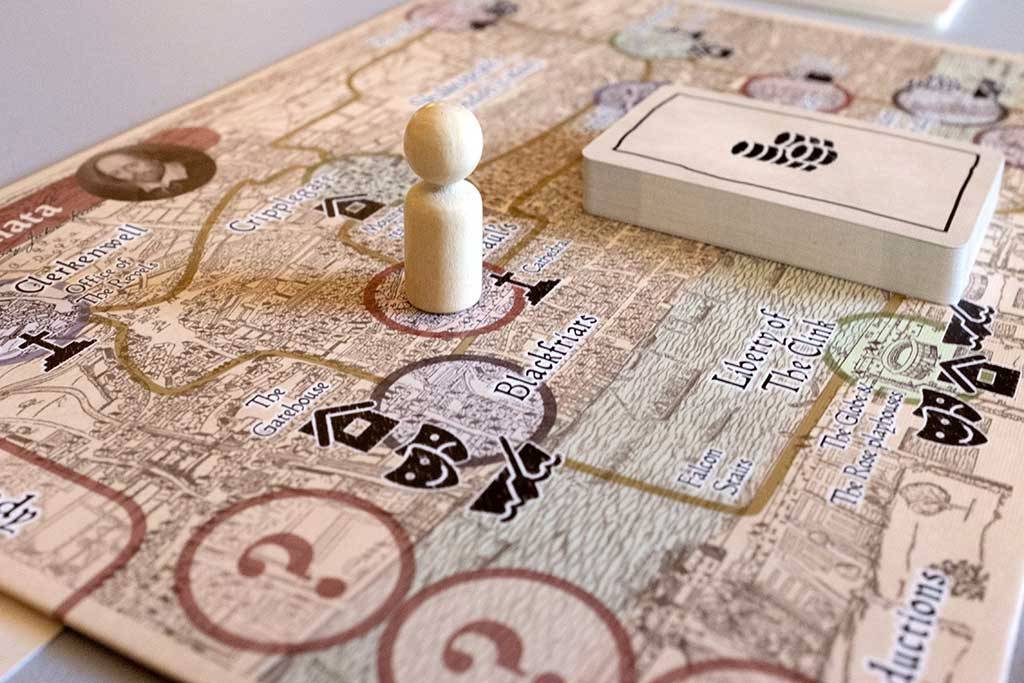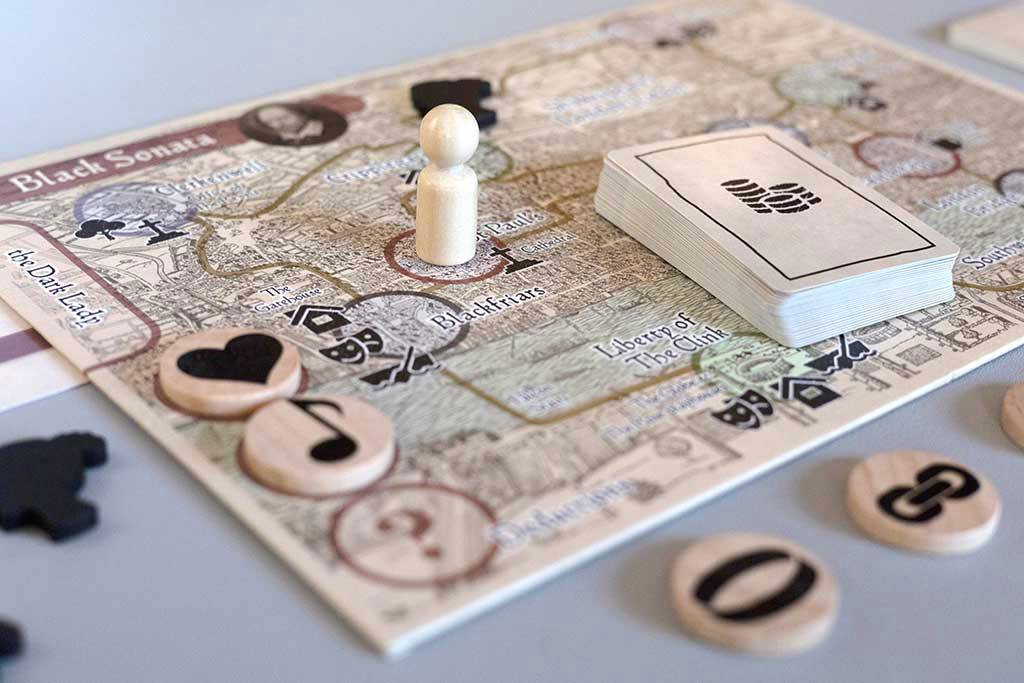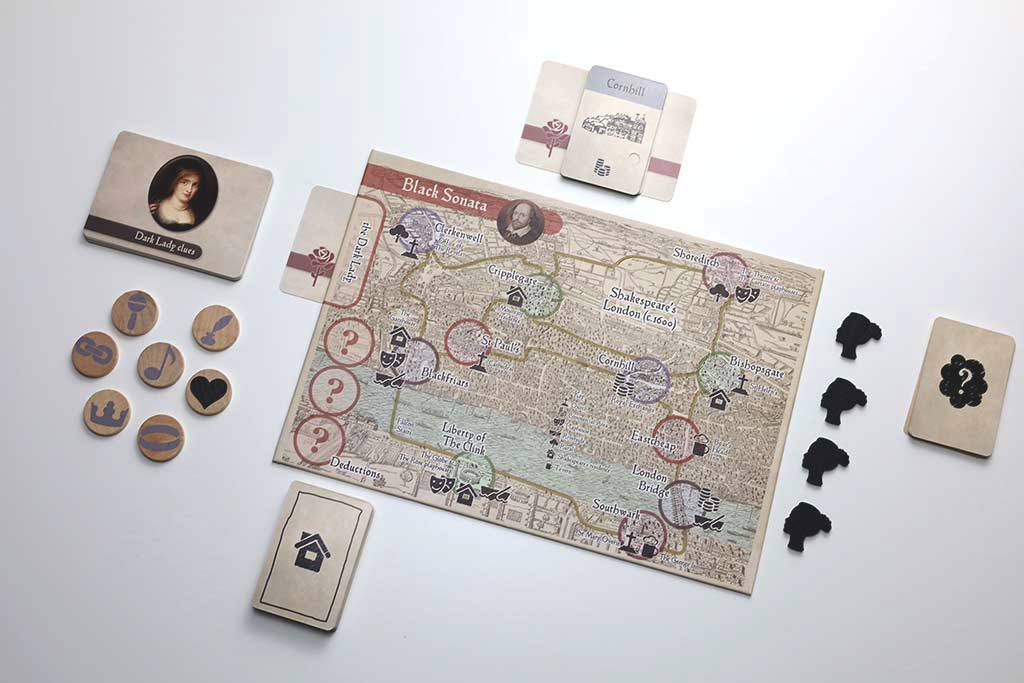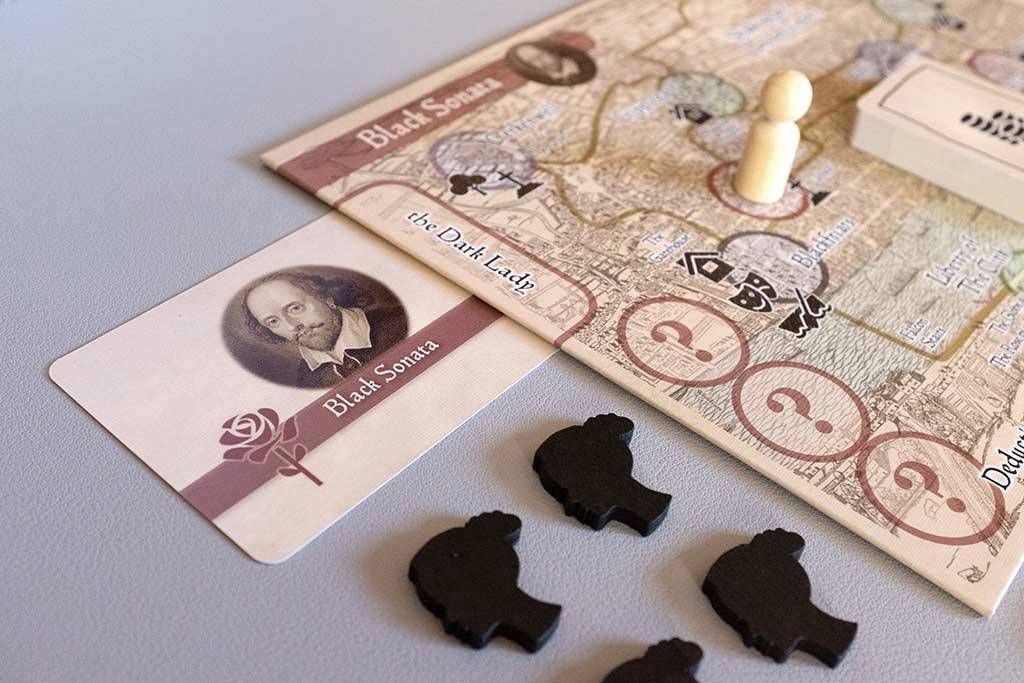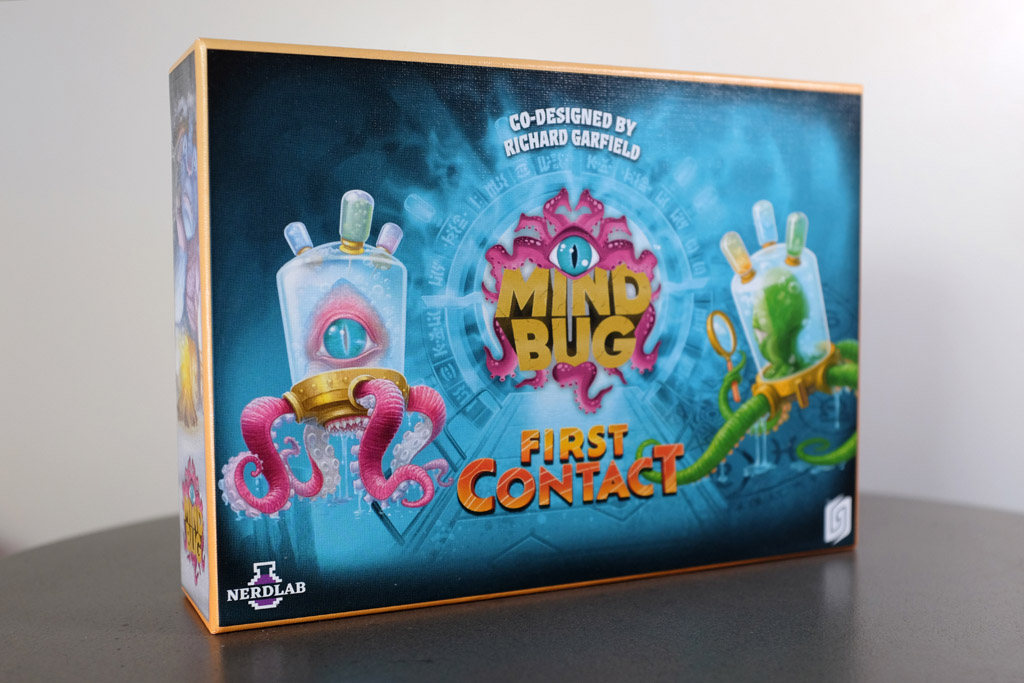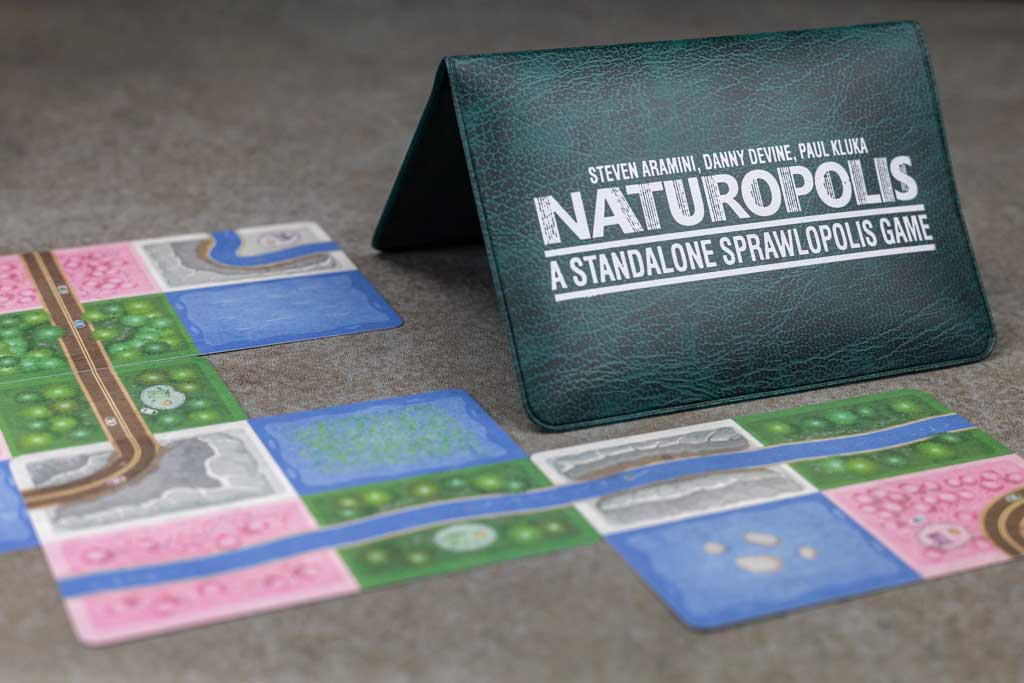Black Sonata
Black Sonata is a solo board game designed by John Kean and published by Side Room Games that has captures our attention for some time. It’s a solo deduction game with an innovative mechanic that combines stealth, hidden movement, and logic puzzles. Set in the mysterious world of Shakespeare’s Dark Lady, the game tasks players with uncovering the identity of the enigmatic figure as you follow her through 17th century London.
I bought this game about a year back and it’s become one of those games I keep pulling off the shelf to look at. It was initially the theme that drew me in. You search for the mysterious “dark lady” of Shakespeare’s sonnets with a clever deck of cards and a small board. But the mechanics of Black Sonata are what keep Black Sonata interesting – a clockwork of parts that work beneath the surface. The combination of rich history and clever mechanic creates a very unique game experience that I haven’t seen in other board games.
Find the Dark Lady
Black Sonata is a game of hidden movement and deduction, where players search for the Dark Lady. The small board is illustrated with a map of London in the early 17th century, featuring iconic landmarks and a network of interconnected streets. The game uses three small decks of cards and a set of tokens to play.
Stealth System
Black Sonata uses a clever stealth system by way of a “Stealth Deck.” It is a collection of 32 cards that each represent one of Shakespeare’s sonnets about the Dark Lady. Each location on the board is marked with one or more corresponding symbols. Each of these cards may have one of the seven symbols: tree, house, church, bank, cafe, boat, and opera. So if the movement card is showing a church symbol, it means Dark Lady can be at one of the locations that also have a church symbol on the map.
The Stealth Deck is placed face down in a predetermined sequence with the top card revealed to show the Dark Lady’s starting position. When the Dark Lady moves, players must track her movements and deduce her whereabouts based on the Stealth cards drawn. The symbols imply the direction of the Dark Lady’s movement, and she can only move to an adjacent location or remain at the same location. These parameters are providing players with just enough information to make educated guesses when tracking her path. The game comes with 4 tracker tokens to help players keep track of movements.
Fog Deck
Part of the unique mechanic in Black Sonata is a movement system that uses a deck of 10 cards known as the “Fog Deck.” When players believe they are at the same location as the Dark Lady, players may “search” the location. Then a Fog card is inserted into the Stealth deck to replace the last Stealth card, and the Stealth card is discarded. The primary objective of the Fog deck is to raise the stake for players, track her movements and deduce her whereabouts, such that after a location is searched, it cannot be searched again. This unique mechanic drives the game as players recognize movement patterns and balance their pursuit of the Dark Lady with limitations introduced by the Fog deck. Players must track her movements and deduce her whereabouts based on the Stealth cards drawn. Fog cards are hindrance that create gaps in the Dark Lady’s hidden movement and disrupt the observable pattern. It is in the players’ best interest to prevent inserting too many Fog cards into the Stealth deck.
Dark Lady Deck
The Dark Lady Deck comprises 12 cards, each featuring a different historical figure who could potentially be the elusive Dark Lady. These cards contain colored symbols representing the characteristics of each lady, such as social status, nationality, and profession.
These clues are helpful for solving the second puzzle in the game, which is to deduce the three traits that describe the Dark Lady. There are seven possible traits: a ring, quill pen, baby rattle, crown, heart, music note, and a chain. Players will use the information on Dark Lady Cards to deduce the “traits” of the Dark Lady.
The game comes with 7 deduction tokens. Each tokens have symbol for one of the traits, with one side colored in white and the other in black. This mechanics help players to track clues collected from the Dark Lady deck.
Location “Key” Deck
The Location “Key” Deck is a collection of 11 cards with each represents one of location on the map. Each of these cards may have one of the seven symbols: tree, house, church, bank, cafe, boat, and opera. Every location on the London map has at least one symbol, with a maximum of three.
These key cards have unique patterns of punched holes that are used together with the Stealth Cards to reveal clues about her whereabout. When players search the Dark Lady’s location, they overlay the Location card onto the Dark Lady’s current Stealth card to reveal through the punched holes whether players have deduced correctly or not.
Every accurate encounter with the Dark Lady will reward players with new Dark Lady clues. These clues provide information that allows players to narrow down the list of potential traits that identify the Dark Lady.
Quick and Satisfying Solo Game
This game is not easy. It took a few rounds to really get the hang of things and even then it took a few rounds to find the Dark Lady. After playing a lot over the past year it’s become easier to win as I understand all the variables a bit more but the game still presents a challenge. Black Sonata is a quick game that can be finished in half an hour or less. The mechanics of Black Sonata are unique and original. The game components are nicely made with texture and beautiful artwork. The underlying framework is vast, precise, and impressive. The sensation from winning the deduction game is quite gratifying.
Who Was The Dark Lady?
Shakespeare wrote 154 sonnets throughout his career. Many scholars believe Sonnets 127 – 154 were autobiographical. It was inferred that Shakespeare was involved with a mysterious woman whom he referred to as “Dark Lady.” Scholars around the world believed the Dark Lady may have been a real person who had an affair with Shakespeare during his time in London.
In the sonnets, Shakespeare described the Dark Lady as a woman with dark hair, dark eyes, and a dark complexion. During that period, society would typecast people with dark skin as slaves. Shakespeare, a forward thinker, did not subscribe to the stereotype imposed by society. That could be a possible reason why Shakespeare did not openly identify the Dark Lady. If the sonnets were true depiction of the circumstances, and given Shakespeare’s respectable stature in London, royals and high society would not have tolerated nor condoned such a scandalous affair, which could be another reason why he would not talk about the Dark Lady outside of his sonnets. It could also be that the speaker was an entirely fictional character. The general interpretation was, Shakespeare and the Dark Lady were having a forbidden affair. Shakespeare’s writing exhibited aggravation and despair, suggesting the relationship was unattainable.
Regardless, these are merely speculations and theories asserted by scholars. There is always the possibility that the Dark Lady is entirely fictional. No one knows the truth. As such, the Dark Lady’s identity will forever remain a mystery.
